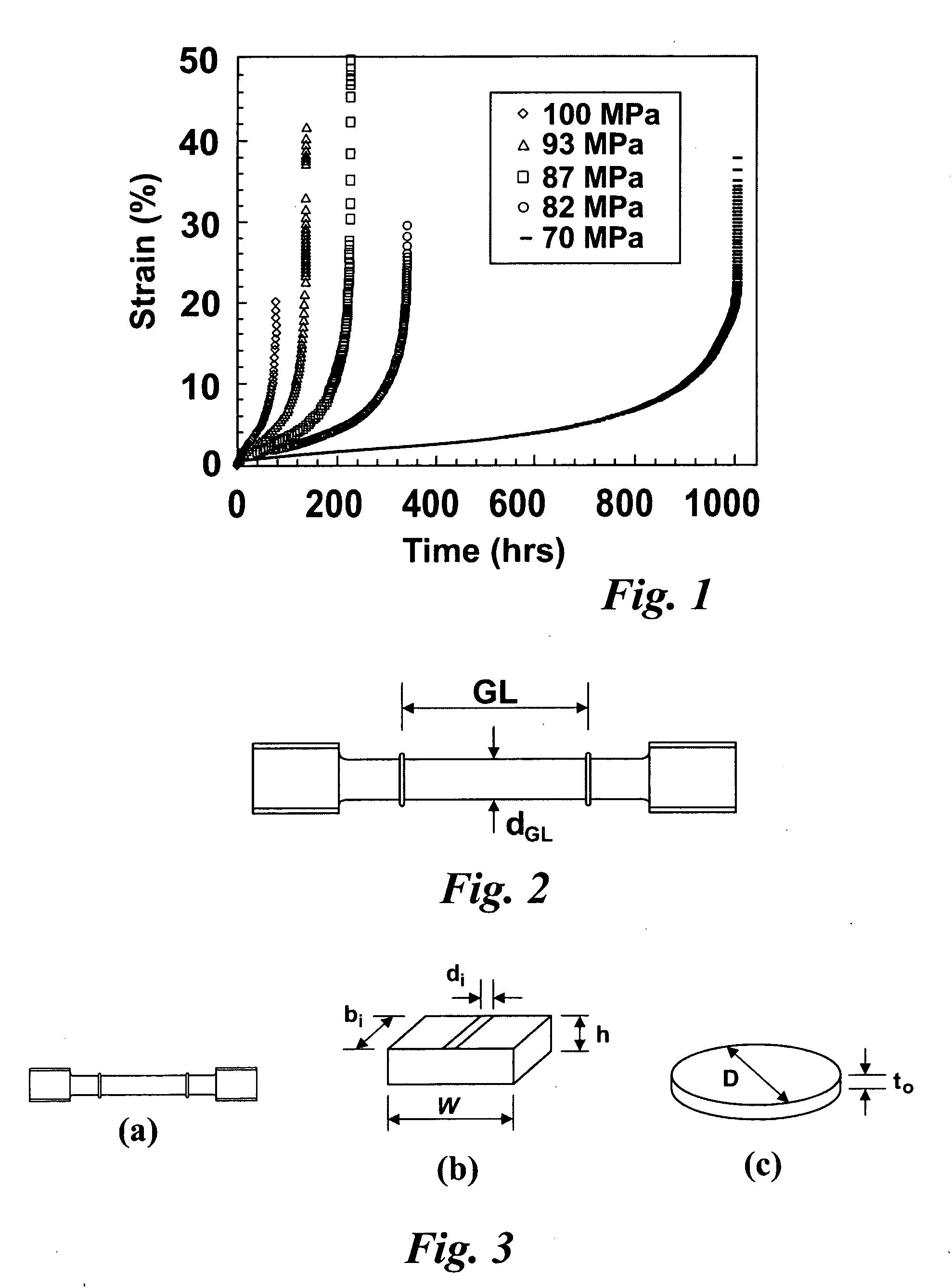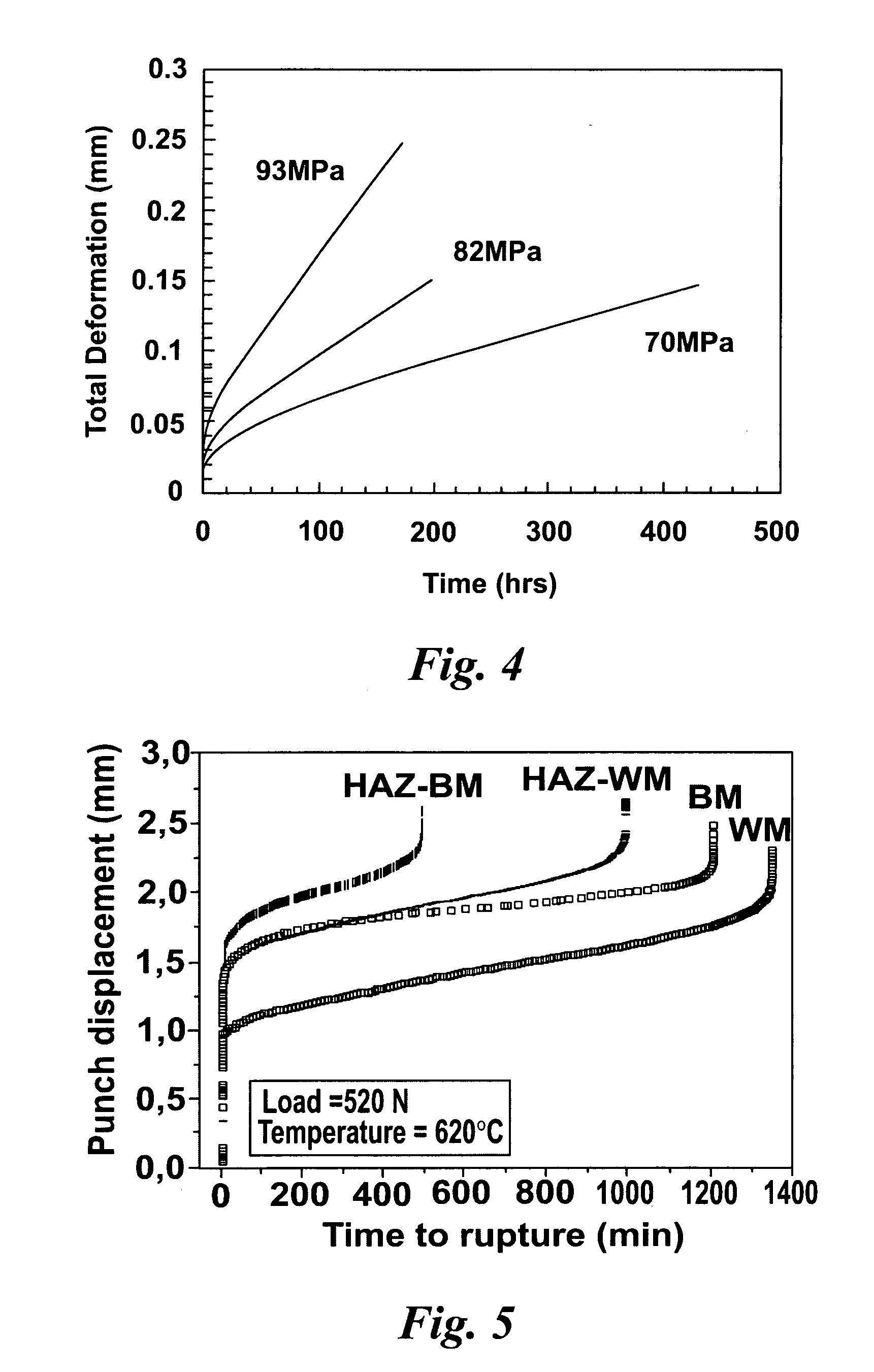Specimen creep test and methods of using such tests
a technology of specimens and creep tests, applied in the field of specimen creep tests, can solve the problems of metal creep, serious damage to plants, loss of human life and revenue, etc., and achieve the effects of low creep strain data, easy measurement of larger deformations, and large deformations
- Summary
- Abstract
- Description
- Claims
- Application Information
AI Technical Summary
Benefits of technology
Problems solved by technology
Method used
Image
Examples
Embodiment Construction
[0042]The present invention will be discussed hereinafter in detail in terms of the preferred embodiment of a novel specimen type and associated method of testing a sample from an object to determine the mechanical properties and in particular for testing and obtaining creep strain data. In the following description, numerous specific details are set forth in order to provide a thorough understanding of the present invention. It will be obvious, however, to those skilled in the art that the present invention may be practiced without these specific details.
[0043]Many components and structures in, for example, power plant or an electricity generating plant, chemical plant, aero engines, super-plastic forming dies etc, operate at temperatures high enough for creep to occur. In order to predict the creep behaviour of these components, “bulk material creep properties” are required. Typical, “bulk property” creep curves are shown in FIG. 1; these curves include primary (reducing strain ra...
PUM
| Property | Measurement | Unit |
|---|---|---|
| Length | aaaaa | aaaaa |
| Mass | aaaaa | aaaaa |
| Length | aaaaa | aaaaa |
Abstract
Description
Claims
Application Information
 Login to View More
Login to View More - R&D
- Intellectual Property
- Life Sciences
- Materials
- Tech Scout
- Unparalleled Data Quality
- Higher Quality Content
- 60% Fewer Hallucinations
Browse by: Latest US Patents, China's latest patents, Technical Efficacy Thesaurus, Application Domain, Technology Topic, Popular Technical Reports.
© 2025 PatSnap. All rights reserved.Legal|Privacy policy|Modern Slavery Act Transparency Statement|Sitemap|About US| Contact US: help@patsnap.com



